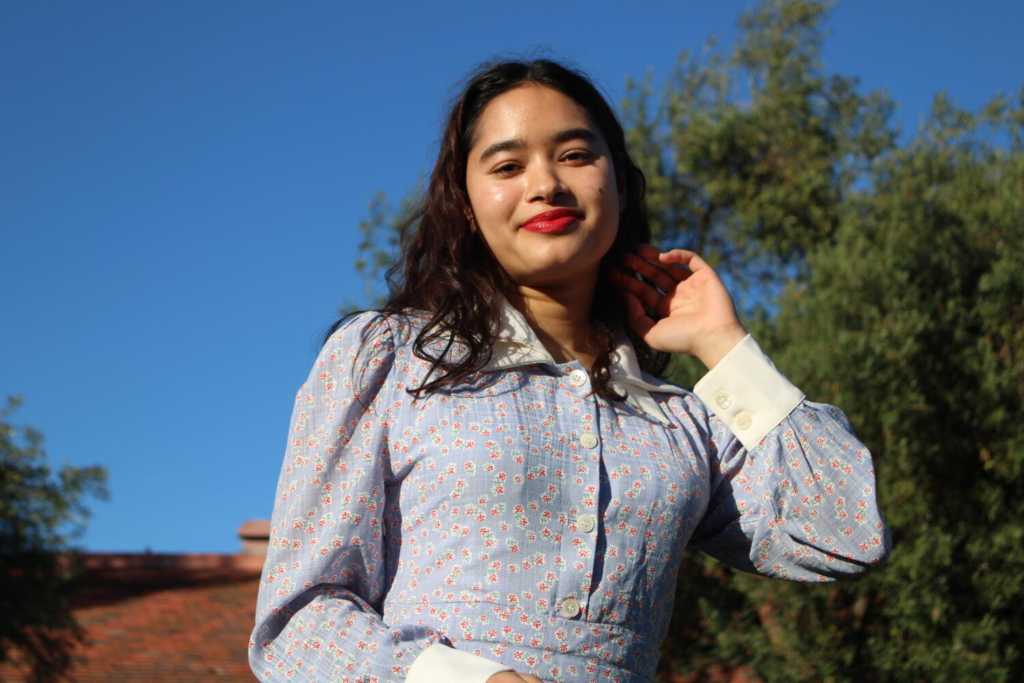“lately when i see myself in the mirror i think i can visualize the ghosts of my hip bones jutting out of my skin. or maybe the shadows of my ribcage, dusted with sand. i study the tips of my fingers and imagine biting them off. i want somebody to sketch, to study the wrinkles that form when i bend my wrist. i want them to draw hundreds of hand studies, all untitled if they displayed them, would my family recognize me? would my friends? would i?”
These are the first few lines from senior Jasmine Kapadia’s poem “rediscovery” previously published in The Aurora Journal.
Kapadia is a senior at Palo Alto High School and is a prolific poet, being a 2021 Santa Clara County Youth Poet Laureate and having her poems featured in various publications. Her work was even awarded a gold medal in the Scholastic Art & Writing Awards and was featured on ABC News. Kapadia’s work is largely inspired by her identity as an Asian American. We spoke with her about her poetry journey and here is what she had to say.
1. How long have you been doing poetry and how did you initially get started?
“I started writing poetry in second grade. My teacher was really into creative writing and she had this mini haiku unit, and so she had us all write haikus. If she liked them, she would pin them up on the wall. And I as a little attention-seeking second grader was like, oh, I get validation if I write a good poem, so I just kept writing haikus. And then from there [I] extended to different types of poetry like free verse.”
2. Have you seen any major shifts at different times that affected your poetry experience?
“In eighth grade being introduced to slam poetry and wanting to explore more POC writers and poets has been really informative and adding my own personal identity in my poetry rather than making a second thought or writing about things that I can’t relate to.”
3. How does your identity as an Asian American influence your poetry?
“I think my poetry is always tied to my diasporic roots. I think because I am mixed Asian American, Chinese and Indian, my culture has always been a way for me to find a voice within those two cultures. And because it coincided with the pandemic, it’s just basically heightened that so if I’m talking about my identity, it also comes from a place of reclamation.”
4. Do you see a purpose to your poetry such as creative expression, leisure or advocacy?
“When you write about your identity, then your poetry or your writing kind of just becomes advocacy because you’re actually talking about it. That’s something I’ve found especially with COVID and writing about Asian American hate. That’s been really interesting just seeing how much my words have just become like almost social change”
5. Do you have any suggestions or tips for Paly students who want to get into poetry?
“People feel like they can’t understand poetry or that they aren’t meant for poetry or they wouldn’t know where to start with it when in reality it actually is quite accessible. If you listen to [artists like] Lorde or Mitski or if you listen to mainstream pop music, that is a form of poetry, it’s just sort of sung.”
View Jasmine’s poetry below, and listen to her deliver one of her poems live.
Video Credit: Jasmine Kapadia





